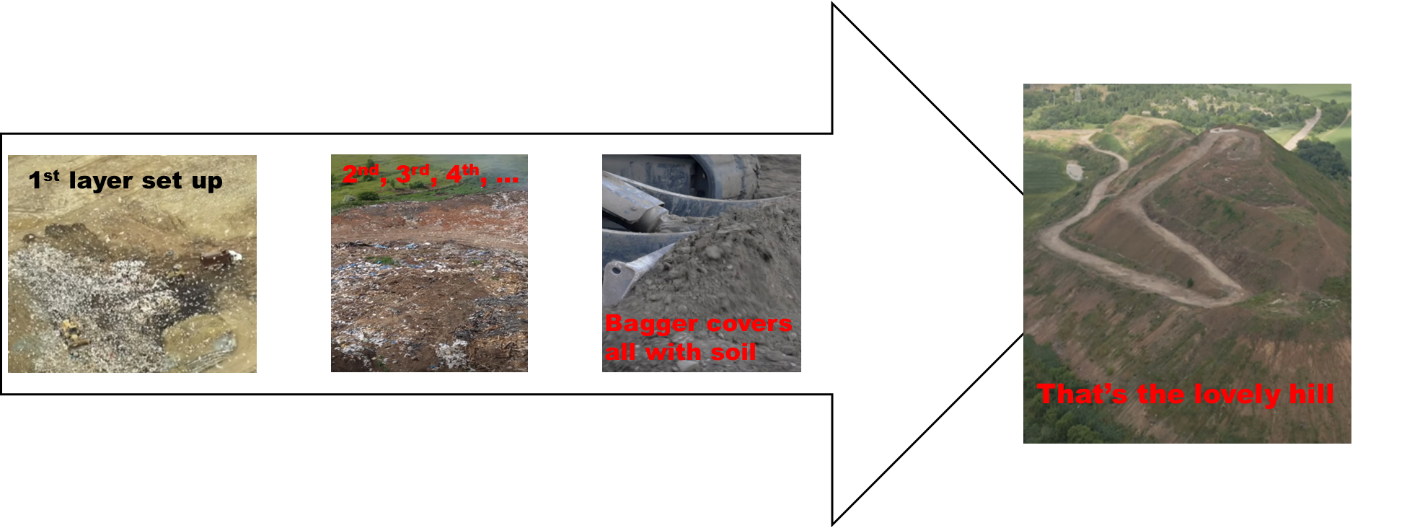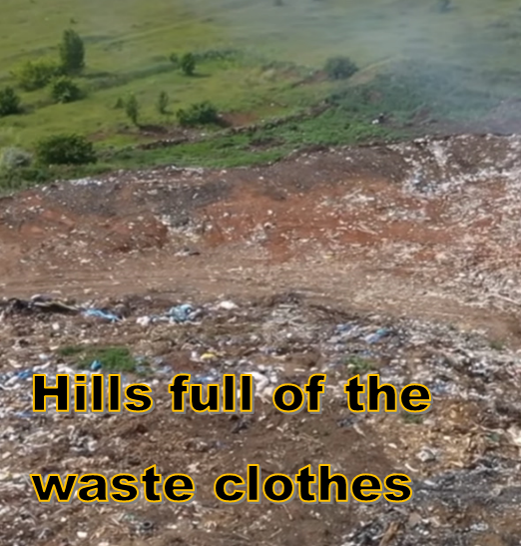Waste clothes reduction by circulation of products and materials as long as possible through regenerative design and using more and more regenerative resources. It is a circular economy. Is this the future way for our society?
Production of clothing has almost doubled between 2000 and 2015, and during this time a number of wearing cloths has declined by 36%, which means that new clothes are wearing only a few times. Speed of production is also tremendous. Hence, this linear approach of product creation through take, make, use and waste is unsustainable, and this exhaustion of Earth’s resources has to be changed. The circularity and reuse are taking great attention. An increasing pace of consumption, fast fashion, makes also the pressure on creators who are making clothes. The waste from discarded clothes (pre- and post-consumer) can sit in landfills for 200 years or more, if made from non-biodegradable materials which most clothes are. Those materials, synthetics, are in more than 60% of clothes we wear.
Considering statistics, we know that 87% of clothes are incinerated (burning waste) which could be outsourced, and globally only 1% of clothes are recycled or turned in new clothes. In EU was produced 7.4 kg textiles per person, but used 26 kg of which 11 kg is wasted. Consumption of clothes equals to 1010 kg of CO2 which is equivalent to about 5 500 km long-drive.

Recently, I read an article: “Dead white man’s clothes: How fast fashion is turning parts of Ghana into toxic landfill” showing one of the places, capitol town of Ghana, where clothes – stated in article they are from UK, Europe, North America and Australia – end up. Everyone who saw those pictures immediately asked about microfibers. Last time, many of research groups from different fields are searching for microfibers, studding them and building scenarios where are they coming from. Interestingly, according above Australian article, society in western countries are overlooking these tonnes of textiles – floating or building mountains somewhere on the coast sides. Yes, it is far away but why we are looking under microscope and not seeing those artificial hills? Reading that article let me think about Europe and its possible role within this topic.
And what happened to me while thinking about what and how to open this topic? I went, spring 2022 through three European countries, and I have realised we got such a waste mountain as well. That’s frightening, isn’t it? Many of us does not know about them because they are hidden. Many of us look outside the train or a car window and may see some nice green hills. But, do we know what secrets are hidden inside those hills to our eyes?
“Do you know that some hills could have their secrets? They may be full of t-shirt, hoodies, jackets we do not want anymore.”
Yes indeed, it could be a waste damp full of the clothes like t-shirt, hoodies, jackets, or packaging.
How all this can happen? Basically, the right place of the right size is found. First layer of waste is created and depressed. New layer is made, followed by another, next one, and so on. Until a bagger comes and covers all the waste damp which is unwanted.

It is not necessary to go far away because also here in Europe are build such an artificial hills of mystery. In other words, the responsibility for our waste we left for next generation to deal with. Most of those clothes are made of materials they were developed to last long. They are great, but only 1% of those clothes are recycled. No one would expect that using those materials for 70-80 years, would spread them everywhere and bring potential health risks to all of us, humans and nature. If we will continue doing things the same way even regenerative farming will not help heal the planet and human health as Charles Massy presented at TEDxCamberra. What is regenerative agriculture can be found here or here, and for German speakers Regenerative Landwirtschaft.
In Sweden about 50% of wastes is used to heat homes, powers buses and fuels taxi fleets thanks to power plants called “waste-to-energy”. It is a short term-solution. Another example is a pilot initiative led by Puma: ”Puma is aware of the vast quantities of football merchandise produced each year, and says mechanical recycling is difficult to achieve due to embroidered logos and printed names and numbers.” according Ecotextile.com.
The future has to be green with slowing down to exhaust Earth’s resources including reduction of fossil-fuel finite resources. Instead, we all should carefully choose and buy our clothes made from materials they are recyclable, renewable, biodegradable, growing year-by-year. One option may be sheep or merino wool which is quite similar to human hair or hair of your dog or cat. Those kind of hairs grow each year and also served as a natural fertilizer to the soil. Some examples include also those made of cellulose. One of the most famous producer of such material comes from Austria. Cellulose to make fibres can also be extracted from waste of agricultural plantations or from industrial processing of fruits used in juice industry like citrus-based fibres or from textile waste, and other fruit resources like pineapple, banana or apples. Nowadays, new types of recourses are entering the field, e.g. alginate – marine resource-based biopolymer which can be used to make fibres.
We should not have to ignore the fact that climate change is happening. Everyone wants to enjoy outdoor, nature or mountains – to be out there, or at least to experience a sunset, does not matter, if at seaside or at the mountains.
Would you now consider to spend more time to choose materials they are more responsible and conscious to nature and of course, to yourself?

